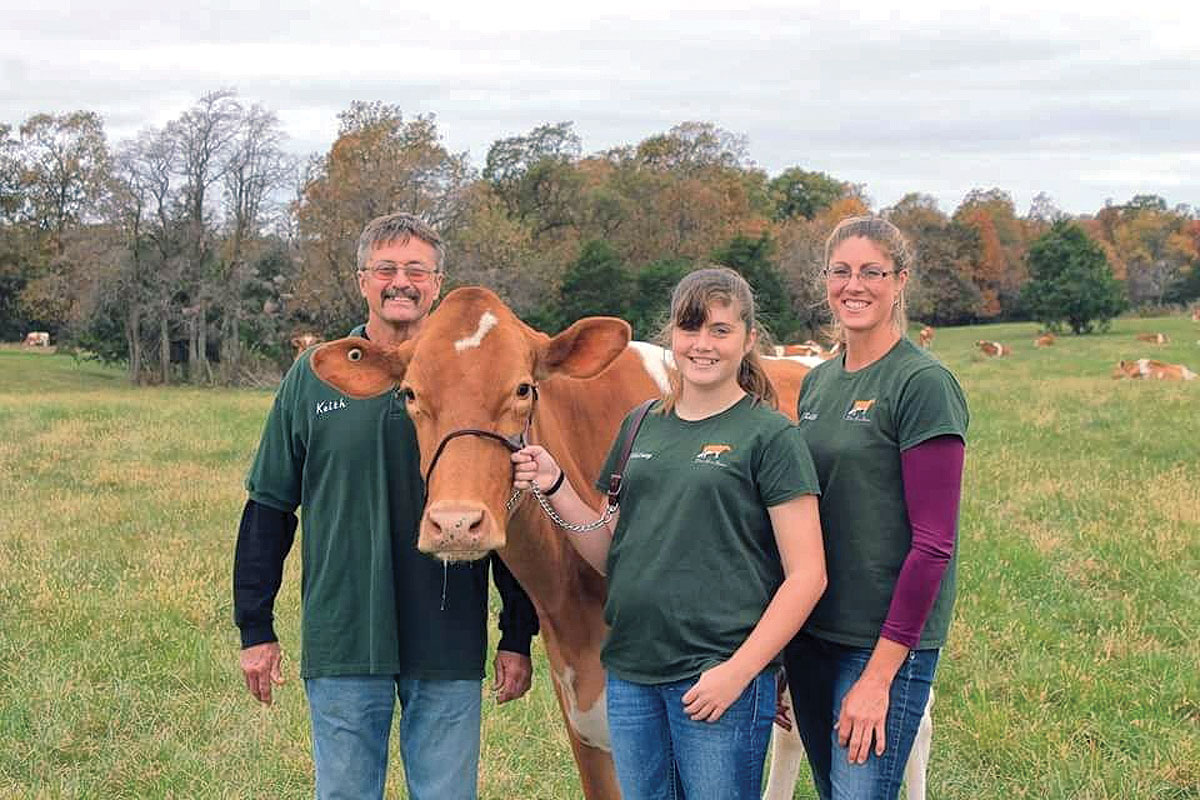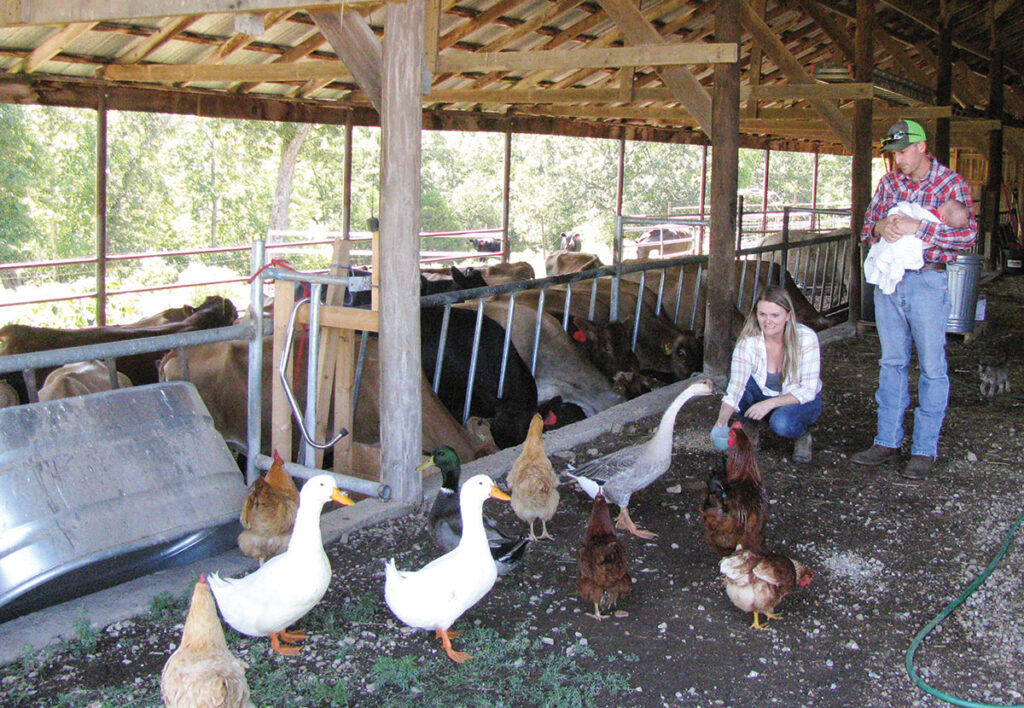
Couple say they had a common goal to become first-generation farmers
NIANGUA, MO. – Chris and Sheena Crandall are raising their family on a Webster County farm near Niangua, Mo. Evelyn (9), Derrick (6) and Zachary (4) are learning about animals and chores. They do a lot with the chickens.
“Derrick really enjoys doing a lot of the feeding. He will feed the pigs. They feed the chickens and put them up at night. They pull weeds in the garden. They bottle fed calves,” Chris said.
The Crandalls have lived on their 80-acre farm just over a year. Chris grew up in the Niangua area, but Sheena grew up in Minnesota. Because of the military, they “bounced all over,” Chris said. He was stationed in California. Then they met in Oklahoma.
“Then we went to Albuquerque, N.M.,” Sheena said.
Their next move was to Georgia. Sheena was in the Air Force and retired in March after 20 years of service. Chris served in the Marines for seven years. He was working for the railroad (BNSF) in Georgia. They had been deciding what to do when she retired.
“She came home from work one day and was kind of upset. I didn’t know what was going on. She looked at me and said, ‘I want to buy a farm. I’m tired of living in these towns. I’m tired of the rat race.’ We were living on base,” Chris explained.
“I told him I want to be a farmer. He looked at me and said, ‘That’s exactly what I want to do,’” Sheena said.
They found their Niangua farm listed online and Sheena flew in to look at it. Chris was OK with anything in this area.
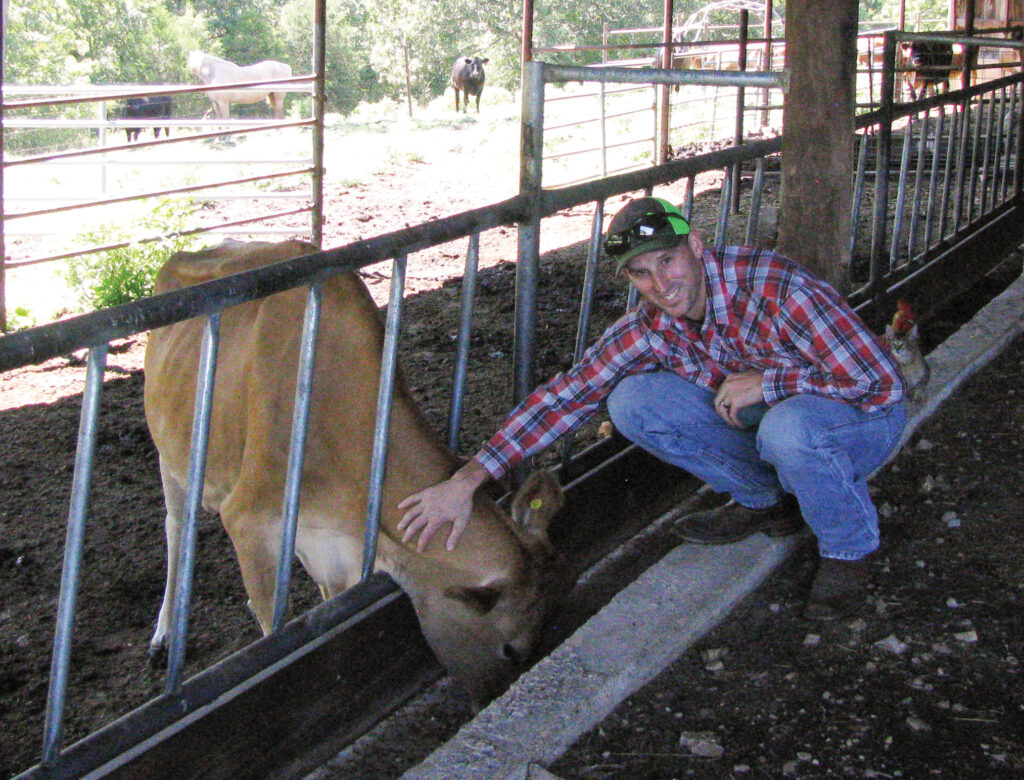
“He would have lived in a tent,” Sheena said.
They are first generation farmers.
“It has been a lot of work. Not knowing anything about farming, it’s been a lot of trial and error,” Chris admitted. They also appreciate all the help they have received from neighbors.
The Crandalls have one Jersey milk cow, some Angus beef cows, a Gelbvieh bull, chickens, pigs, geese, ducks and a horse.
The chickens were the first animals they purchased. It was what they had looked at the most.
“We knew we would eventually get cows, but they’re expensive. That’s something we had to budget for and really get everything with the fencing and stuff done. The chickens were cheaper and the first project the kids and I did was build the chicken coop,” Chris explained. “Sheena wasn’t retired when we came back. She was driving back and forth to Georgia. So the kids and I were here waiting for school to start and last summer we built that chicken coop.”
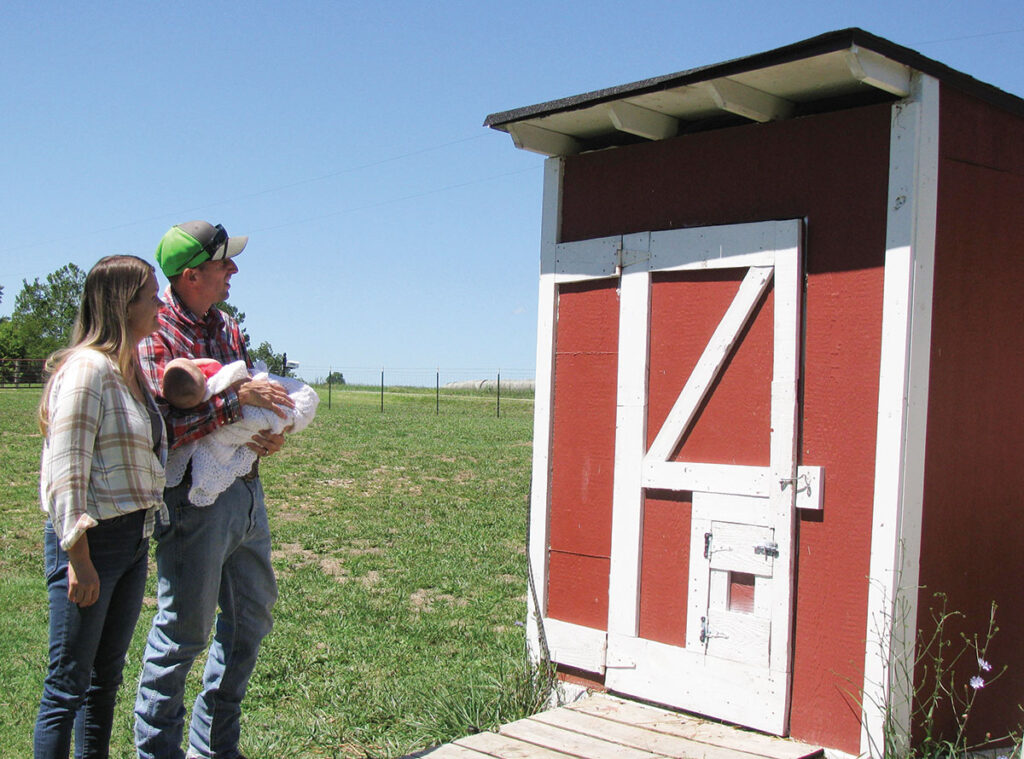
He also said the chickens were something easier for the kids.
“We knew we were going to get cows, but we were waiting until I got back, so I could be extra help,” Sheena added.
They have chickens for meat and for eggs.
“We had a bunch of meat birds we raised and slaughtered,” Sheena said. They butchered around 30.
Right now, they have around 20 chickens; Rhode Island Reds, Buff Orpingtons and Cinnamon Queens.
“They’re one of the largest egg layers. They’re pretty productive. They’re also dual-purpose; meat or eggs,” Sheena stated.
“She wanted the Reds and I like the Buffs. They’re like golden-colored, so I like them,” Chris said.
They have two Blue Butt pigs., with plans to process them in October.
“Hopefully they will weigh around 300 pounds. The kids have really enjoyed having them. They’re okay with the butchering. They did good with the chickens. They helped us,” Chris said. “We did it all ourselves. We scalded them and plucked them ourselves. Zachery was holding a chicken and ready to pluck.”
Sheena thinks the greatest thing about pigs is “the taste of them.” While Chris likes the looks of them and watching them grow. They plan to corn-feed the pigs. “
“Stop giving them scraps, unless it’s lettuce or vegetables. No wheat. We’re going to try to feed them a corn mixture to fatten them up,” Sheena said.
They hand-milked Carol, their Jersey cow. She is dry now, but last winter was quite an experience.
“That was pretty difficult in the wintertime, because we don’t have a closed barn. We have an open barn. So when it was zero degrees outside, you were out there trying to milk and I’m putting my hands in my shirt to warm them up so I can go back to milking her,” Sheena explained. “There were times when I thought ‘I don’t want to do this anymore. Just let the calf suck.
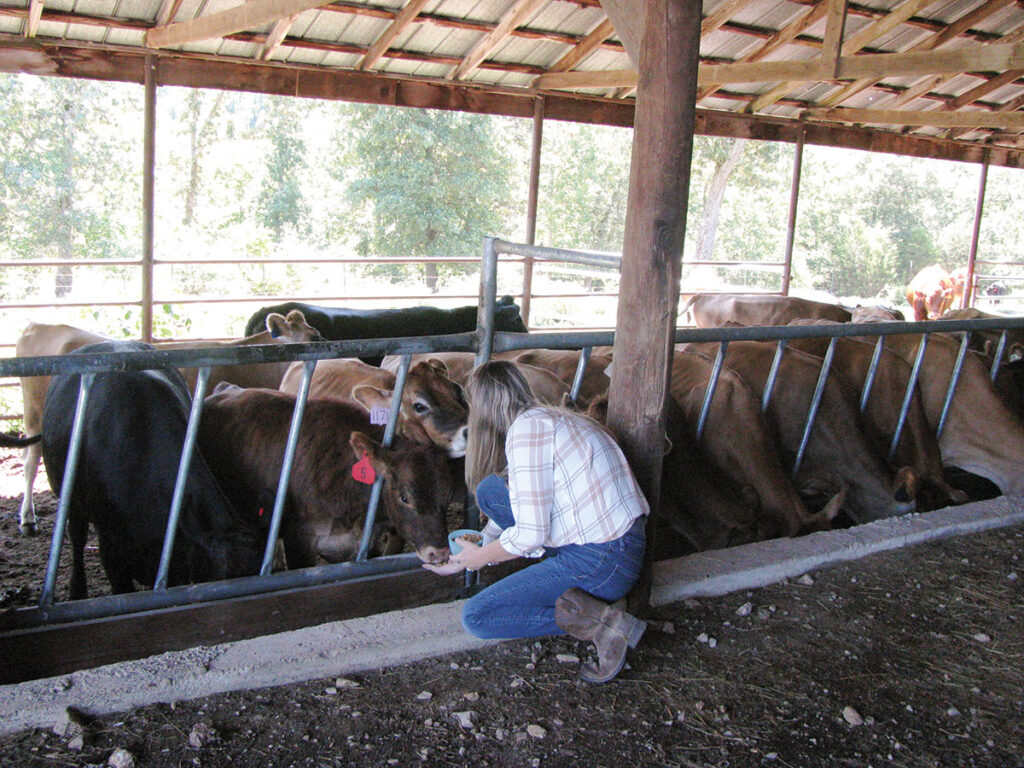
They milked once a day and let the calf suck during the afternoon.
Their beef herd is growing. They bought four bred Angus cows.
“We got lucky this first year, because every cow that calved, the calf made it,” Chris said.
Before Chris’ Uncle Otto passed away, he advised, “When the cows go off and have their calves, leave them alone. When they’re ready they’ll bring them back to you.”
They have learned he gave good advice.
“We had a cow that calved and we didn’t see the calf with the mom. We knew she had calved all the way on the backside, because my brother and I saw it,” Chris said. “A couple of days later, she was up at the barn bellowing. We went and looked for the calf. Found the calf was still alive and it took off and got on the neighbor’s and it was a two-day ordeal trying to get the calf back. So Uncle Otto’s advice was right. Leave it alone.”
In addition to their own herd, the Crandall’s farm also serves as pasture for a neighbor who is currently grazing about 20 head.
The Crandalls have more improvements they want to make to their farm, but they are enjoying the peace and quiet. The farm life is “teaching our kids a work ethic,” Chris stated.






